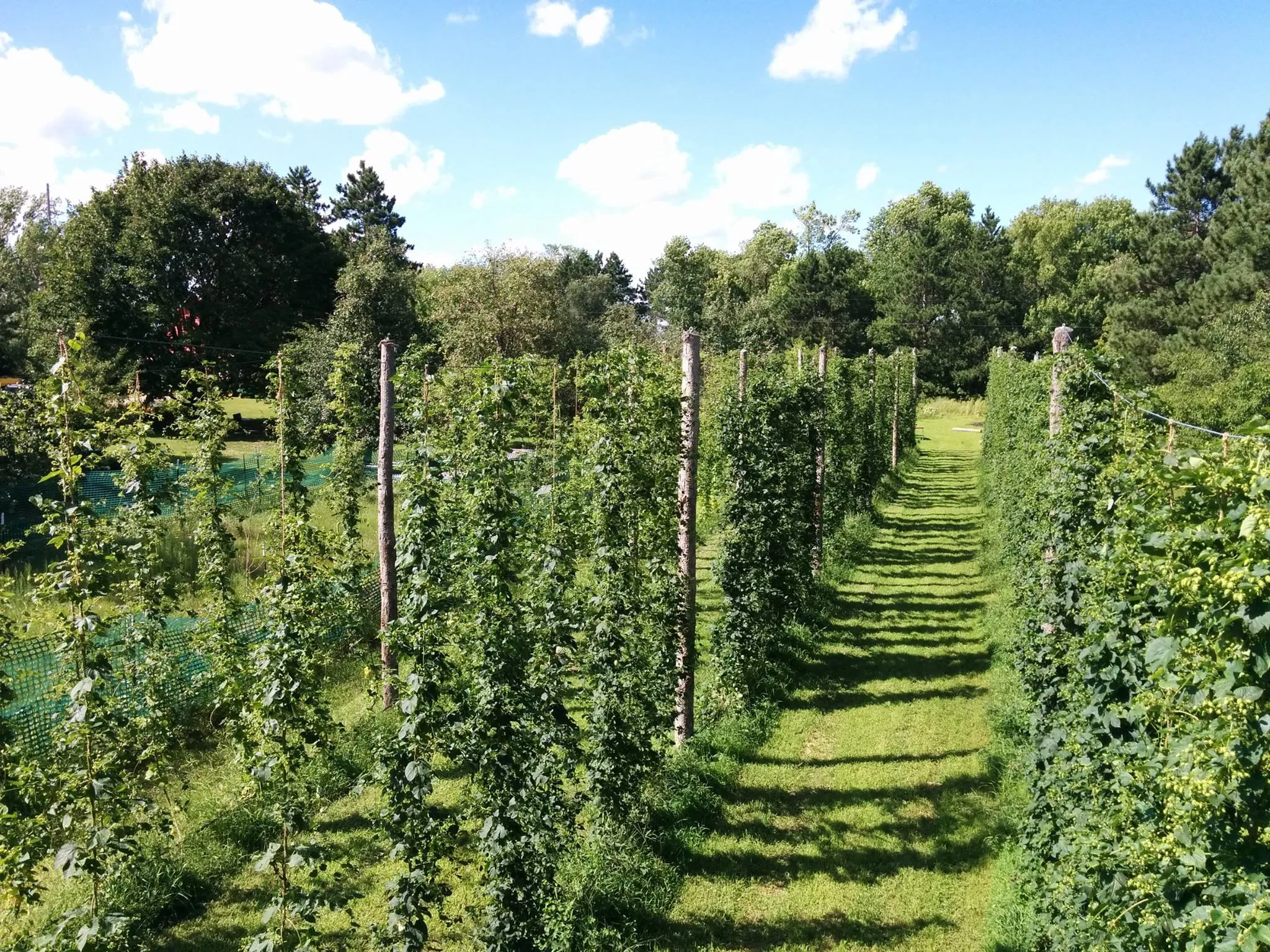Thinking About Growing Hops?
Photo Credit to Tootie & Dotes
The number of breweries in the U.S. has more than doubled since 2011, now approaching a count of
4,300, according to the Brewer’s
Association. The craft beer business is booming; seasonal batches and unique ferments from
local ingredients are filling the kegs of hip bars in every city. There’s no doubt beer is a product
consumers are excited about, and hops are a key ingredient. Integrating hops
into your crop plan is a significant commitment, but it’s worth entertaining; here are a few key
considerations to get the juices flowing.
The Basics
Hops need a minimum of 120 frost-free days, and around 15 hours of daylight. Irrigation is
necessary for an abundant hop harvest; and given that their roots can extend to a depth of 15ft,
sandy loams tend to be the most preferred soil type. While yield fluctuates
by variety, this perennial plant typically has five productive years.
Infrastructure
Not unlike other perennials, hops require strategic planning and come with some hefty upfront
costs. Eric Sannerud, CEO of Mighty Axe
Hops in Minnesota, advises that “Hops are a costly crop to get into. For starters you need
to build an elaborate trellis system…(comparable to) a vineyard but 18 feet tall. Then, once your
hops are ready for harvest you'll need a specialized picker to get them off the bine, drier to bring
them to stable storage moisture, and a pelleter to take those dried hops to pellet form.” The first
steps are to consider the style of trellis you’ll use, how to budget for it (check out slide 58 in this great powerpoint on hops production by CSU extension),
and
how to construct it.
Harvesting
It’s said to take about one person hour per mature plant to hand harvest, so if you find your
yourself growing on anything greater than one ace, machines are going to be a necessary addition.
Large scale hops harvesters start at about $30,000 used, but there are some compact models on
the market more feasible for small growers. Some hops farmers contract out the harvesting process,
but it’s also worth investigating local co-ops in your area for resource sharing.
A few hops co-ops out there include:
Know of any others? Post them in the comments section below!
If you’re looking to keep the harvesting process in house, but aren’t growing on the large scale,
University of Vermont Extension put together plans for building a mobile hop
harvester, a really neat option that’s both portable and efficient for mid-sized
productions.

Mighty Axe Hops in Ham
Lake, Minnesota
Scale of Production
Given that harvesting is the primary cost in hop growing, scale of production plays a big role in
determining what size fields make sense. “Hops are a specialty crop that require lots of special
attention, and equipment, which makes investing in hops as part of a diversified operation a
difficult decision” heeds Eric. “You'd want to be sure that, financially, the hops can stand on
their own and support the necessary harvesting and processing equipment.” You’ll also need to be
mindful of seasonal timing so that the big labor pushes in spring and harvest time don’t overlap
with other busy times in a diversified farming production.
Eric’s advice for those new to the hops growing game: “Take. Your. Time. Hops are a patient crop.
You don't need to grow one million acres in year one. Plant a handful, or a 1/4 acre or some size
that if they don't work out or you don't like 'em or you get distracted you're not going to be
financially ruined. Grow slowly, grow smart.”
If you liked this article, and want to see more like it, enter your email in the subscribe box to the top-right of this page and we'll send you new blog articles as we publish them.

Jane works as a Field Production Specialist at the Center for Agroecology and Sustainable
Food Systems, where her days are filled with tractor work, irrigation coordination, orchard
care, and educating apprentices and interns. Her favorite way to end a long day's work in
the sun, is running down the hill to Mitchell's Cove and jumping in the Pacific.